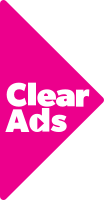
As Australia’s cosmetic injectables industry booms, new AHPRA guidelines are set to redefine what clinics and marketers can legally say
Australia’s cosmetic injectables industry continues its rapid expansion. Now worth $4.1 billion and projected to grow 19.3% annually through to 2030, the sector is booming. Fuelled by demand for non-surgical treatments and a surge of new entrants, this explosive growth is colliding with mounting regulatory pressure and a widening compliance gap that many businesses are unprepared to navigate.
In the last financial year alone, the Therapeutic Goods Administration (TGA) requested the removal of nearly 13,500 advertisements from online platforms including those promoting cosmetic injectables, medicinal cannabis, and weight-loss treatments underscoring the scale of non-compliance across digital media.
“We’ve seen a flood of new entrants offering cosmetic injectables, often with limited understanding of the advertising restrictions that apply to prescription-only products,” says Alison Lee, Director of ClearAds. “This highlights a broader industry challenge with many businesses are unaware that their advertising may be breaching the law.”
From 2 September 2025, new guidelines from the Australian Health Practitioner Regulation Agency (AHPRA) will take effect, setting out how advertising for higher risk non-surgical cosmetic procedures such as injectables, fillers, thread lifts and PRP, must be conducted. While the law itself hasn’t changed, these guidelines clarify how AHPRA will interpret and enforce existing advertising rules under the National Law. They apply to all advertisers, not just health practitioners, and outline what is considered misleading or unlawful including the use of t
estimonials, pricing, hashtags, and promotional language that may breach legal obligations.
Under both existing TGA law and the upcoming AHPRA guidelines, it is illegal to directly or indirectly advertise prescription-only injectables, including:
- Product names (e.g. “wrinkle-reducing injections”, “dermal fillers”)
- Brand names (e.g. Botox, Juvederm, Restylane)
- Nicknames (e.g. “tox”, “baby botox”, “brotox”, “lip flicks”)
- Hashtags referencing any of the above
- Advertising treatment prices
Despite these clear restrictions, a recent audit by advocacy group Operation Redress found nearly 100% of sampled injector clinic websites breached existing advertising law.
The TGA removed over 2,000 ads and blocked more than 150 websites in 2024 alone and has publicly committed to stronger enforcement moving forward.
“We understand that navigating these laws is incredibly difficult, especially for new businesses or fast-growing clinics,” says Lee. “ClearAds acts as a safeguard helping practitioners and marketers get their messaging right across social media, websites, print, and influencer content before it causes damage.”
ClearAds, a longstanding member of the Therapeutic Goods Advertising Consultative Committee (TGACC), reviews advertising material across all platforms to ensure compliance with the Therapeutic Goods Advertising Code (TGAC). The TGA has indicated that using a service like ClearAds demonstrates a genuine willingness to comply, which may help reduce penalties in the case of an alleged breach.
ENDS
Media Contact:
Blue Planet Public Relations
kasey.simpson@blueplanetpr.com.au
0401 931 577
Sophie.blue@blueplanetpr.com.au
0416 006 821
